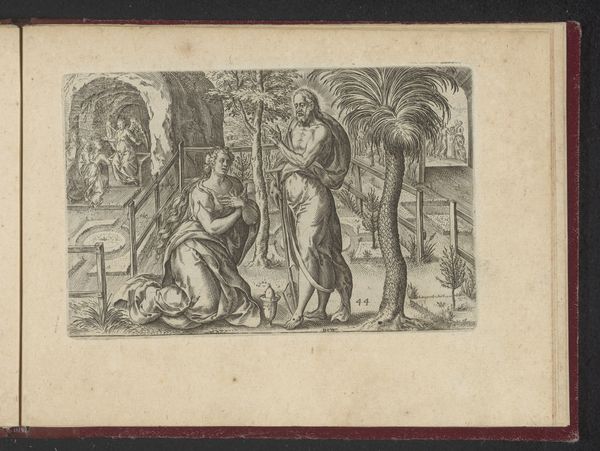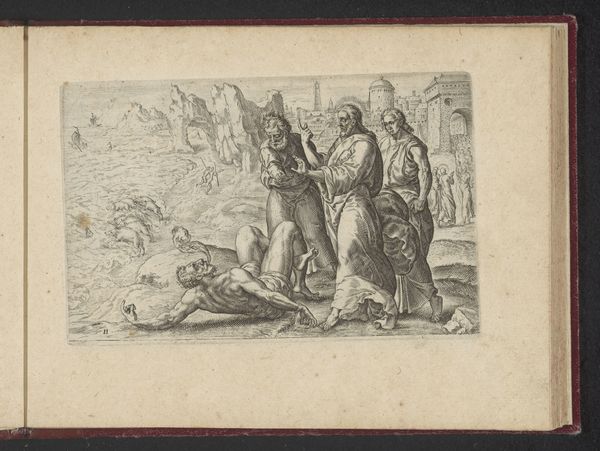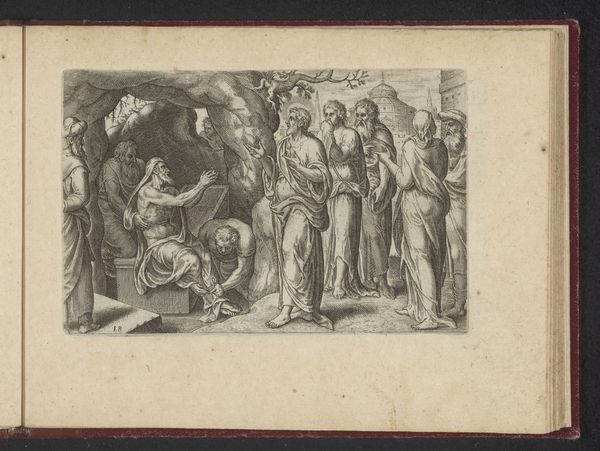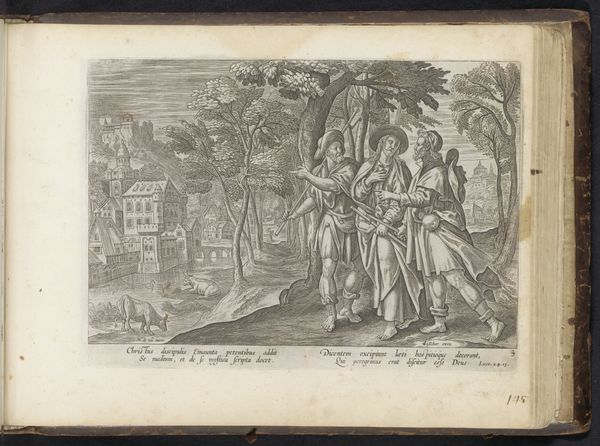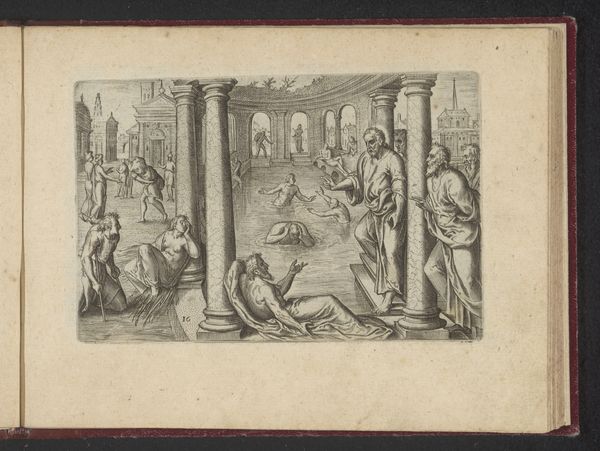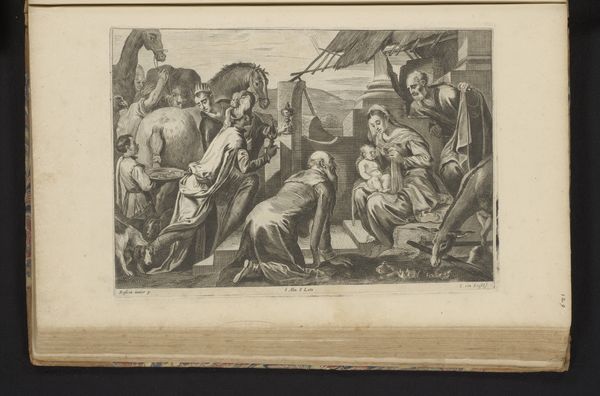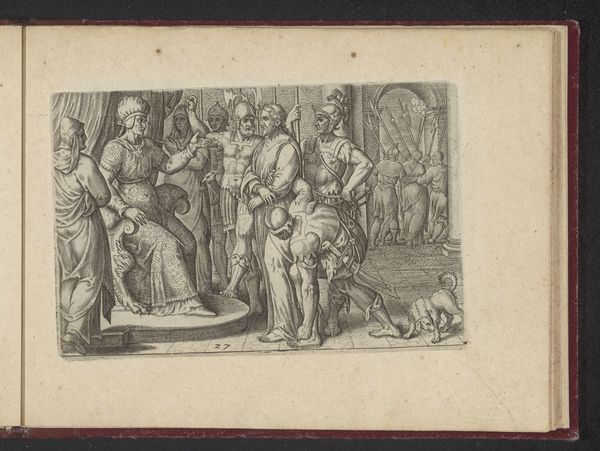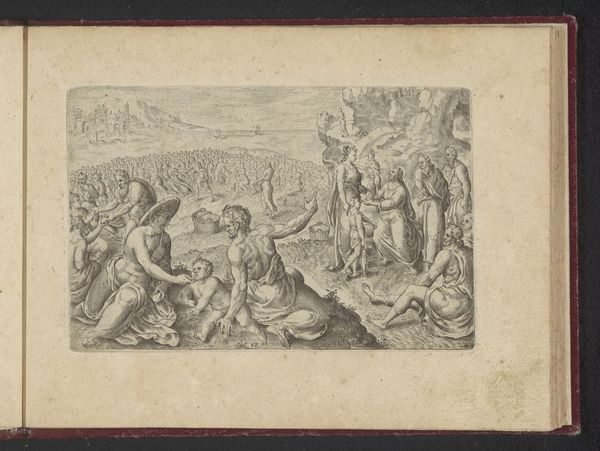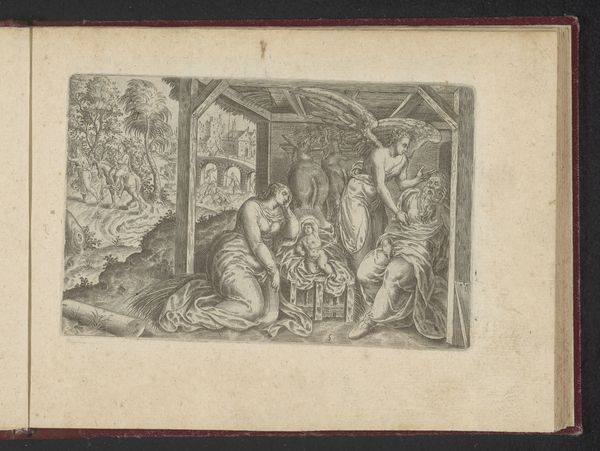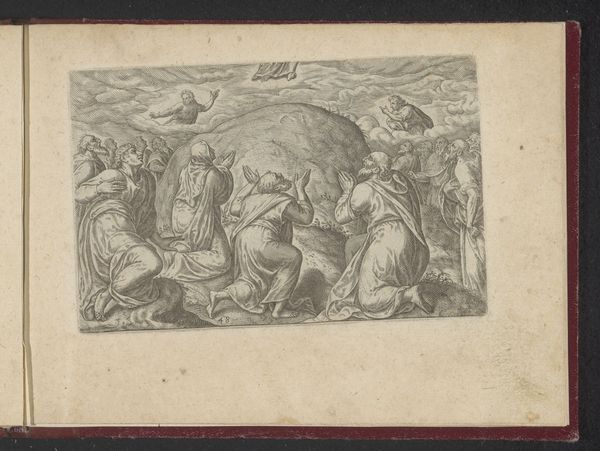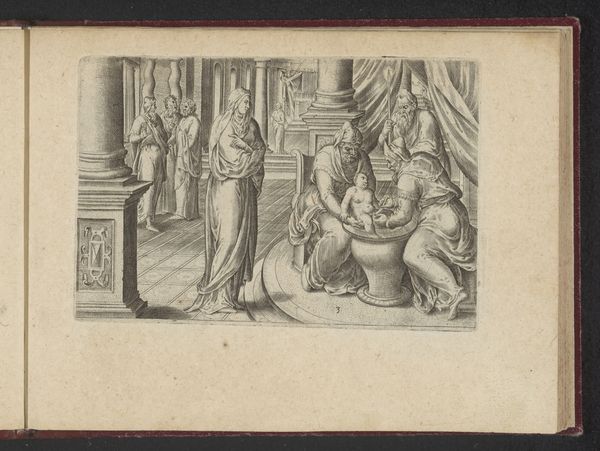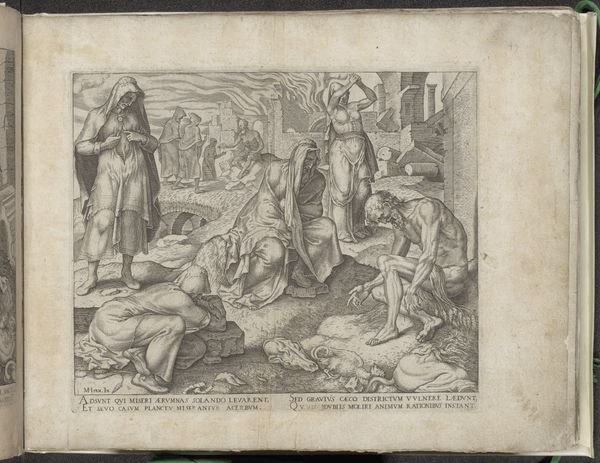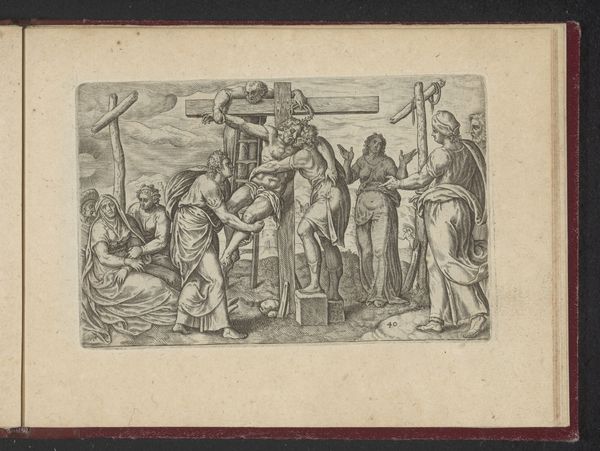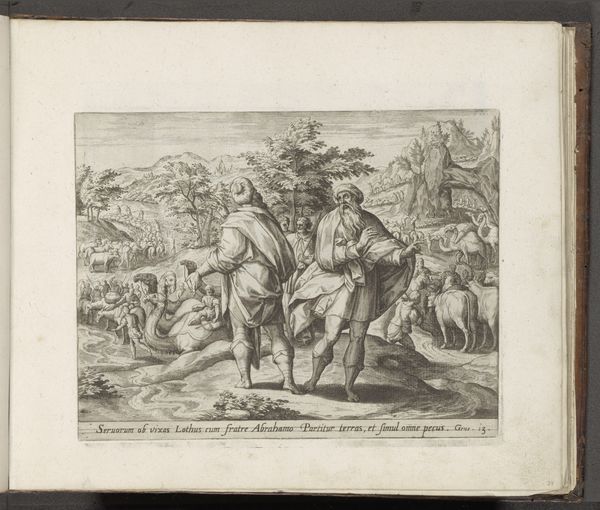
print, engraving
#
narrative-art
# print
#
landscape
#
mannerism
#
figuration
#
history-painting
#
engraving
Dimensions: height 92 mm, width 139 mm, height 137 mm, width 183 mm
Copyright: Rijks Museum: Open Domain
Editor: This engraving, "The Temptation of Christ," by Philips Galle, dates back to 1573 and it's currently housed at the Rijksmuseum. The detail is incredible, but it also feels staged, somehow artificial despite the natural setting. What are your thoughts on it? Curator: Immediately, I'm struck by the layering of symbolism. Galle is not simply depicting a biblical scene; he’s engaging with centuries of visual and theological interpretation. Notice the positioning of Christ—bathed in light, almost luminous – against the shadowy tempter. This immediately sets up a binary, an enduring cultural obsession with good versus evil. How does the background, that peculiar architecture, contribute to this sense? Editor: Well, it seems deliberately classical. Maybe it's meant to represent earthly power or temptation itself? It's oddly prominent, isn't it? Curator: Precisely! Think about the visual language of power during this period. The architecture evokes Rome, the seat of both classical civilization and papal authority. Placing it within the Devil's temptations suggests a corruption of those ideals. And note the deer to the left, a symbol that evolved over time, representing both purity and sacrifice, reflecting Christ's own journey. Galle is presenting a complex interplay of established imagery and Mannerist aesthetics. Editor: I hadn't considered the deer in that way. I was so focused on the landscape and figures. This gives the image so much more resonance; each element now speaks to larger themes and ideas about moral choice. Curator: These artists actively shaped their viewers' understanding of scripture, history, and morality through symbols that continue to hold psychological weight even today. Every tree, every stone, is a loaded signifier. We see the cultural memory embedded within these visual forms. Editor: So, looking beyond just the immediate narrative, we see this image working on multiple levels, shaping and reflecting the viewers' worldview? I find the idea of such cultural encoding really powerful and not immediately apparent! Thanks for that insight!
Comments
No comments
Be the first to comment and join the conversation on the ultimate creative platform.
